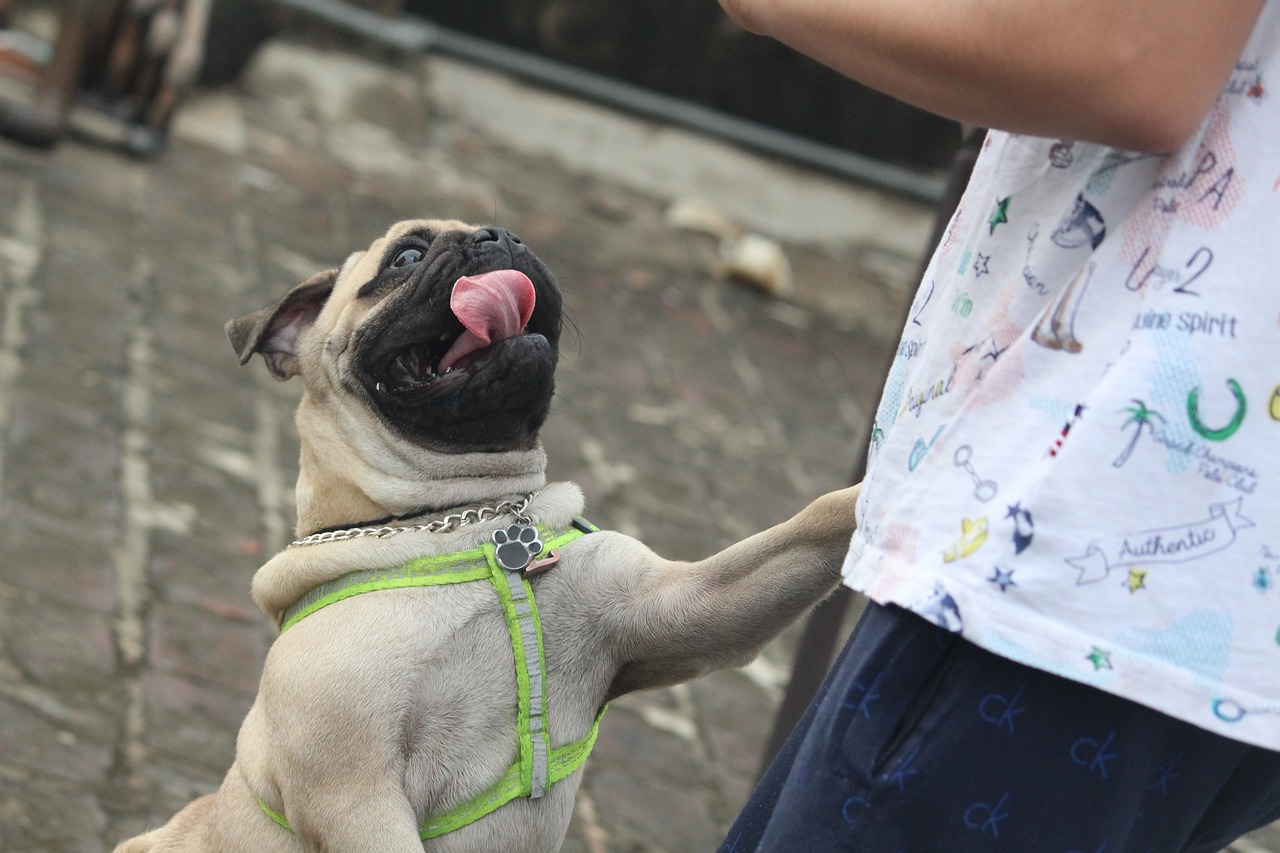Dog Jumping Beans: Chaos with Greeting Guests
Welcome to our latest blog post! Today, we want to help with training your dog by tackling a common challenge faced by many dog owners: teaching their pups how to greet guests politely. While jumping up is often a sign of affection and excitement, it can be embarrassing and troublesome, especially around young children or elderly visitors. Fear not! We’re here to offer effective solutions that can transform your dog’s jumpy greetings into joyful welcomes.
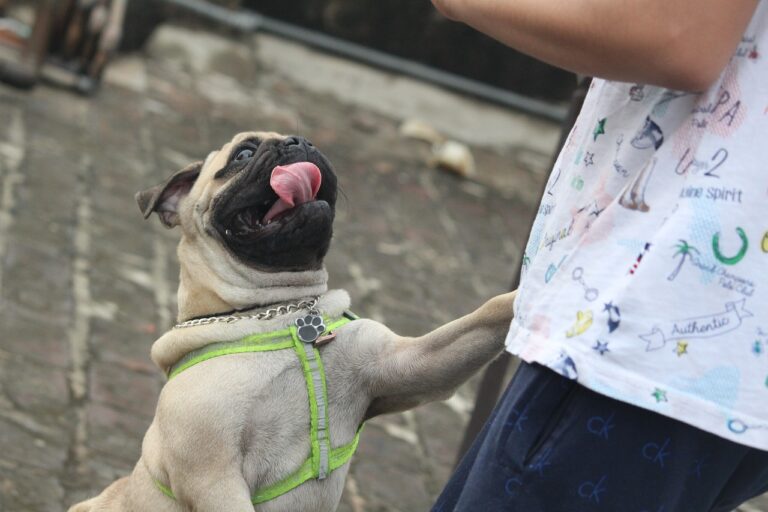
Understanding Why Dogs Jump
Before we explore how to address jumping, it’s crucial to understand why dogs do it in the first place. Jumping is a natural behavior for dogs, rooted in their instinctive ways of communicating and interacting:
- Seeking Attention: Dogs quickly learn that jumping up gets them immediate attention, even if it’s negative such as being pushed off or told “no”.
- Excitement: Many dogs jump when they’re excited, and seeing their human friends or new guests can trigger this joyous behavior.
- Lack of Training: Sometimes, jumping results from not learning appropriate greetings. Dogs may not understand the proper way to greet humans without being taught.
Understanding these reasons helps us approach training with empathy, reminding us that our dogs aren’t jumping to be troublesome, but rather trying to communicate in the only way they know how!
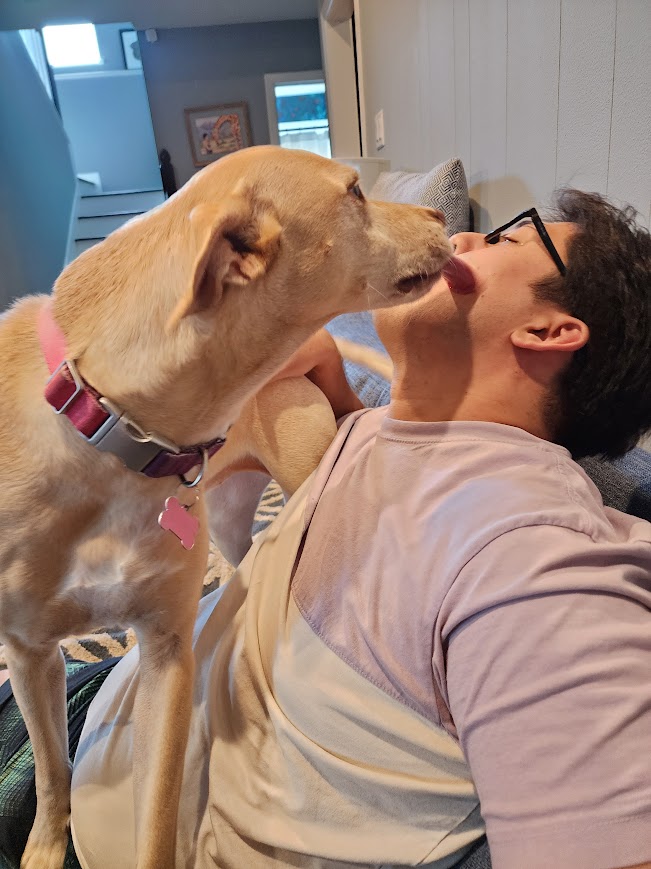
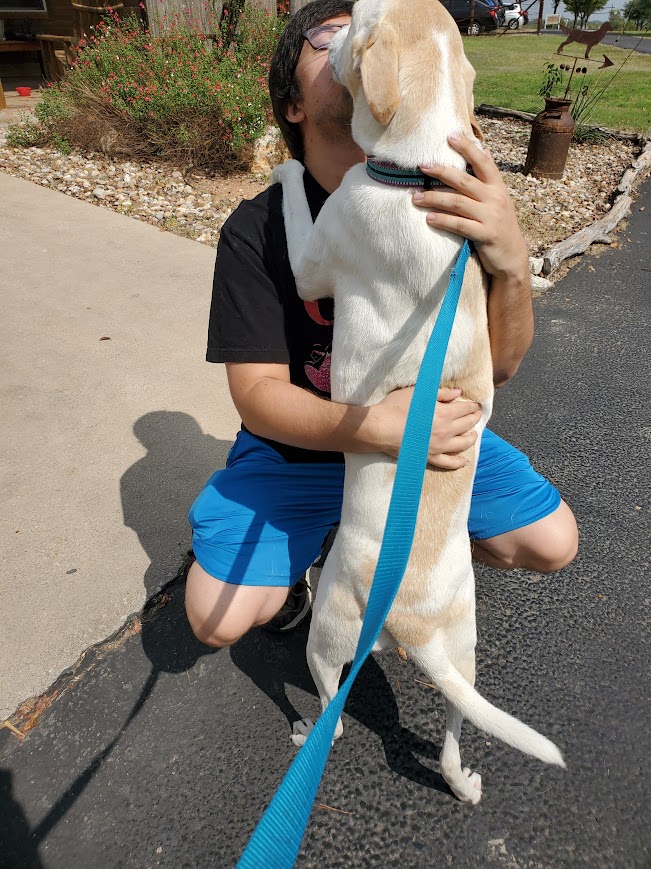
Step-by-Step Guide to Prevent Jumping
To work on the foundation of not jumping up on guests, it is important to teach alternative behaviors or incompatible behaviors. There are many different ways you can work on not jumping on guests. We are going to focus on just five different skills you can try out.
Marker
- What’s a Marker? A marker is a signal to tell your dog, “Hey, I like what you did there, and a reward is coming!” It can be a clicker or a word like “yes” or “good.” Although these are positive, their main job is to signal a reward. We recommend using small pea-sized treats or your dog’s kibble for fast repetitions of behaviors. Make sure you find what is most rewarding for your dog!
- Getting Started: Without asking your dog to do anything specific, use your marker (click, say “yes”, or “good”) and then give them a treat right away. Do this 2-3 times in a row to introduce the concept.
Step 1: Practice New Behaviors Without Guests
1. Find it: This is a scent and search game!
- Why it works: Sniffing is very calming and relaxing for our dogs so we always want to promote sniffing. If your dog’s nose is down on the ground, it is incompatible to jumping so we can reinforce that behavior instead.
- How to do it: Your dog doesn’t have to be doing anything, just say “find it” and toss one treat on the ground. Once your dog eats it, say “find it” and toss another. You can repeat this as many times as you would like. The more difficult of an environment your dog is in, the harder it will be for them to focus on the game if the treats are tossed too far away. It is okay to toss easy treats right in front of your dog.
2. Name recognition: We want to build that when we say our dog’s name, they will give you their attention.
- How to do it: Start with no distractions. Say your dog’s name and when they look at you (it does not need to be eye contact but just at your person), mark, and reward. Do this walking around your house, in your backyard, or out on walks. Slowly build in distractions that you will ask for their attention away from. Always rewarding the behavior.
3. Touch: This is a nose to hand target.
- How to use it: We can use this behavior for attention getting, asking a guest to ask for a touch to show your dog how to approach a guest without paws first but nose first, or to help give your dog a trick to help get some excited energy out.
- How to do it: Start with a flat open palm and show it to your dog. Your dog should naturally check out your hand looking for treats. Once your dog touches your hand with their nose or sniffs your hand, mark “good”, and treat. Repeat. Once your dog is immediately performing the behavior, start to cue the behavior with “touch” as you show your hand. Once they touch, mark with “good”, and treat. Practice this all around your home and at different distances. If they are struggling with a certain distance, go back to where they were most successful and build from there.
4. Settling on a mat: This is one of my favorite skills to teach every dog. We can help teach our dogs how to settle in exciting environments.
- How to teach it: Start with using a mat, bed, or blanket. This doesn’t have to be the same thing every time, but it is nice to use something portable. Sit down and lay the mat in front of you. Do not talk to or look at your dog but have a gentle gaze off to the side. Start with placing one treat on the mat at a time to show your dog this is where you want them to be. You can start to build duration in between each treat. Wait a few seconds to see if your dog will automatically offer a sit or a down. If they don’t, that is fine, go back to placing one treat at a time in the same spot. If they do sit or lay down, give a small jackpot of 2-3 treats in the same spot right in between their two front paws. You can then start rewarding anytime they give calming signals such as blink, sigh, adjust to be more comfortable, lower their head, or sniff. You can signal when you are finished with an “all done” and do a “find it” with a treat toss away. Practice around your home preferably during meal times so you can feed their kibble with the exercise.
5. Getting a toy: Teach our dogs to find a toy and show our guests.
- Why it works: Teaching your dog to get and hold a toy while a guest is over can help your dog transfer the excitement into the toy which will prevent jumping and possible mouthiness from the excitement.
- How to do it: To teach this, you can hold the toy out and when your dog interacts with it in any way (look at it, touch it, mouth it) mark with “good” and treat. Repeat then add “get it” or “get your toy”. If all they can do is just look at it or touch it, wait to see if your dog will try other things to get the reward. If they still aren’t mouthing it, try making the toy exciting by moving it around on the ground, once they mouth it, mark “good” and treat. You can then slowly build the duration the toy is in their mouth before you mark and treat. If your dog is doing really well with holding the toy, try petting them. If they drop the toy, stop petting and cue them to get the toy again before petting. Remember to mark and reward the behavior if the petting is not reinforcing enough at the time for them.
Step 2: Prepare for Success with Management
- Have Treats Handy: Choose high-value treats when a guest comes over that your dog loves but doesn’t get often. This could be string cheese, boiled shredded chicken, or regular dog treats, but they must be special. We want special treats as this is a super challenging environment change for our dogs that we want to work through. As they do better, you can lower the level back to kibble and then change to toys, pets/attention from the guest.
- Leash Your Dog: Initially, keep your dog on a leash when guests arrive. This will help prevent the ability for your dog to reinforce their behavior of jumping on guests.
- Create a Quiet Space: Preparing a calm space for your dog is crucial, especially when they’re overly excited or when you’re unable to dedicate your full attention to training. This special area should be a place where your dog can unwind without feeling isolated, ideally introduced well before any guests arrive. Try playing relaxing music, a white noise machine, a loud fan blowing at the door to block out sounds, or playing a tv show in the same room as your dog. You can offer a puzzle toy or frozen enrichment item, or long lasting chew for them to focus on to build calmness in the room. Remember, whenever you give your dog enrichment items or chews, it’s important to monitor them to ensure their safety and prevent any choking hazards.
Step 3: Set the Scene
- Leash Your Dog: Initially, keep your dog on a leash when guests arrive. This will help prevent the ability for your dog to reinforce their behavior of jumping on guests.
- Inform Your Guests: Have your guest text or call you when they are almost there so you can unlock the front door and get your gear ready. Have them not knock or ring the doorbell but walk in. Let them know you’re training your dog and how they can help by entering calmly, ignore the dog until told you can pet or talk to them.
Step 4: Implement the Training
- Ignore the Jumping: Everyone should turn their back on the dog when it jumps, avoiding eye contact, and saying nothing. If we talk to the dog, even to say “no”, this is still reinforcing the behavior as all they want is your attention.
- Practice the behaviors: Make sure you are working on learned behaviors you have practiced before you had guests over. These are the find it, touch, settling, attention work, and getting a toy. Your dog may not respond right away and that is okay! Don’t repeat yourself more than twice and know that your dog is very excited and it is hard for their brain to function. This is normal and just means you need to practice on reinforcing the behaviors without excitement and gradually adding exciting things in.
- Reward the Calm: When all four paws are on the ground at any time, mark the behavior with “good!” and reward your dog.
- Ask to “go say hi”: Once calm, ask your dog to go say hi to your friend. Reward for the behavior you want to reinforce, ask your guest to stop petting and turn away if the jumping starts again. When your pup is calm, you can unleash them and continue your time with your guest as normal.
- Practice Makes Perfect: Regular, short training sessions are more effective than occasional long ones.
Step 5: Training Tips
- Be Consistent: Everyone in the household must follow the same training steps.
- Timing is Key: Mark with a clicker, “yes” or “good” and reward your dog immediately after the desired behavior to ensure they make the connection.
- Keep it Fun: End training sessions on a positive note, with a game or a walk. If it is never not fun, then assess what could be happening and try to adjust your plan as needed.
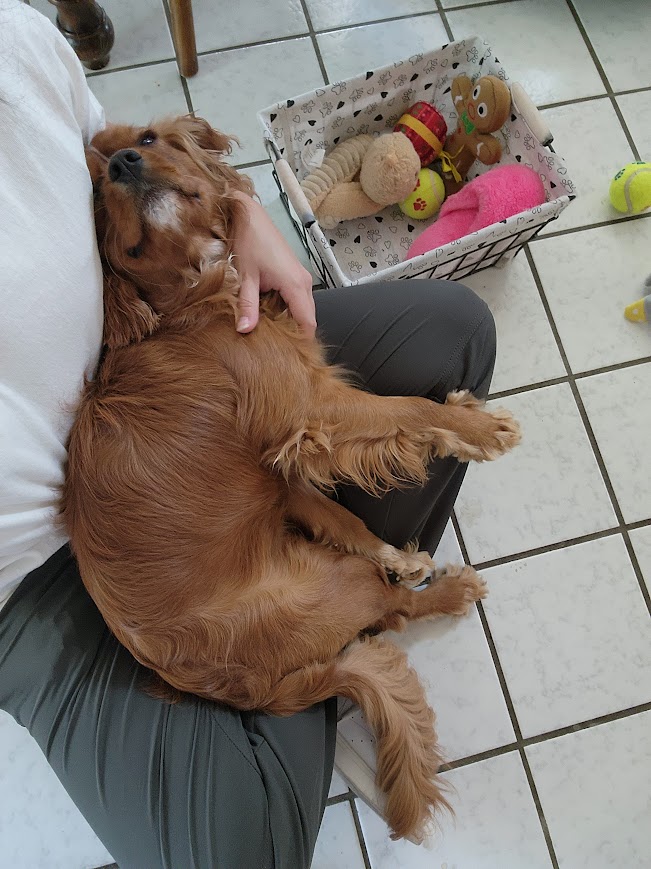
Troubleshooting Common Challenges
- Persistence is crucial: Some dogs may take longer than others and that is okay!
- Gradually Increase Distractions: Start in a quiet environment, gradually introducing more distractions as your dog becomes more reliable.
- Seek Professional Help if Needed: If you or your dog is struggling, consider hiring a certified professional dog trainer to come to your home or do a virtual session with you online.
Closing Thoughts
In the grand scheme of life with your dog, it’s the small victories that often mean the most. Teaching your dog not to jump on guests is one such victory that can make a big difference in your life and theirs. Celebrate each step forward and know that with each new behavior you build, you’re not just training—you’re building a language of love and respect. Here’s to many more small victories on your training journey!





